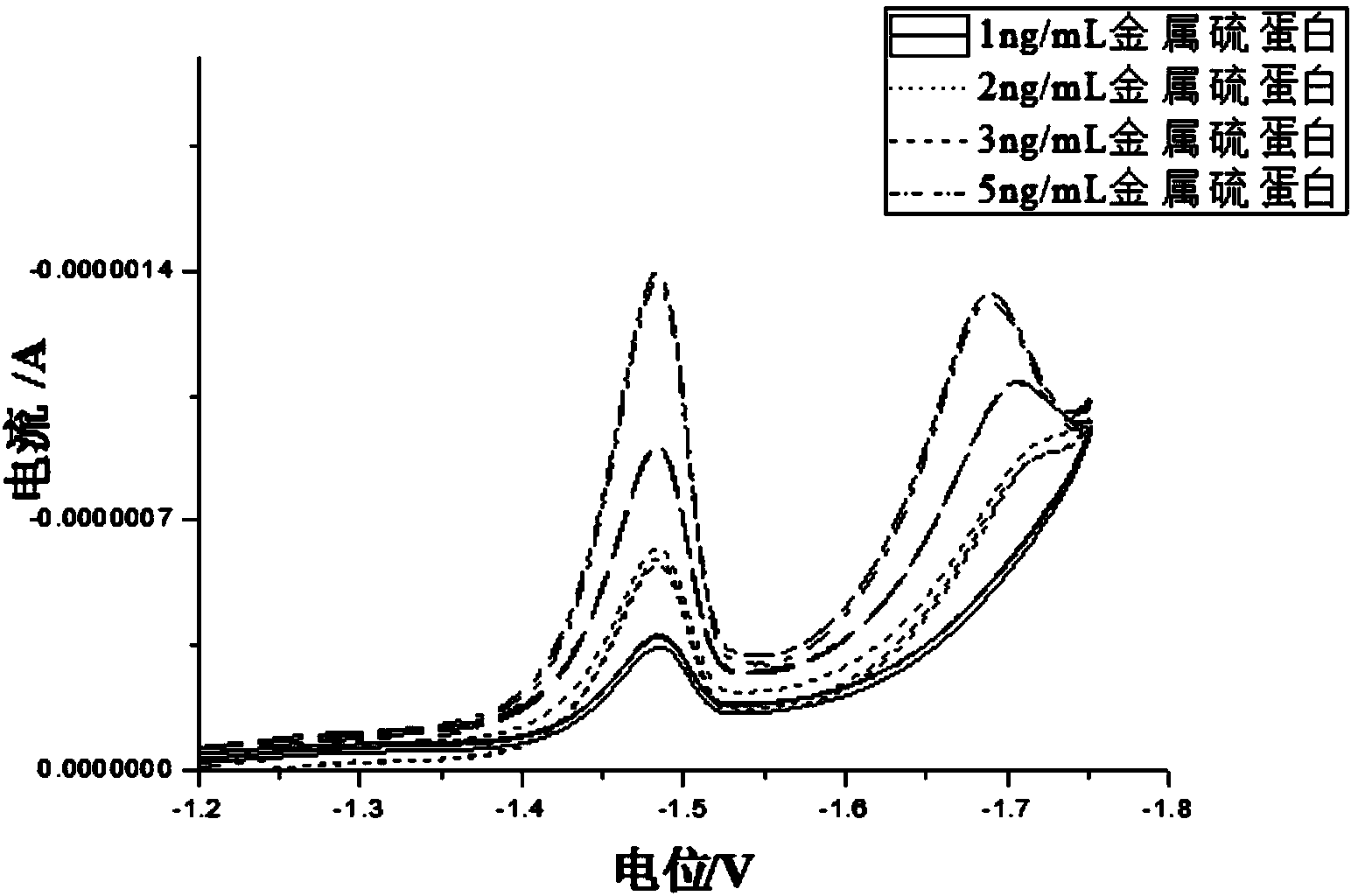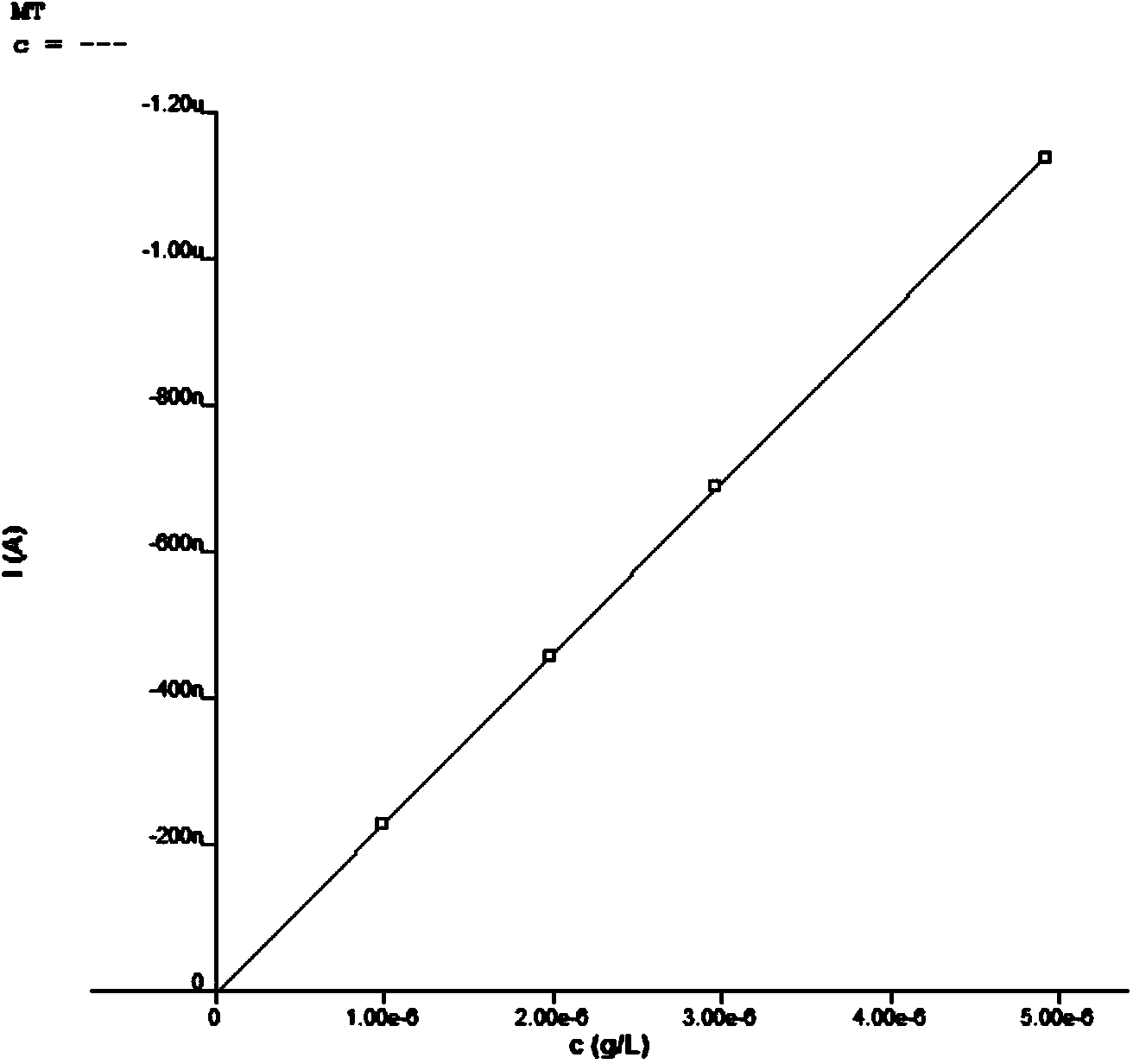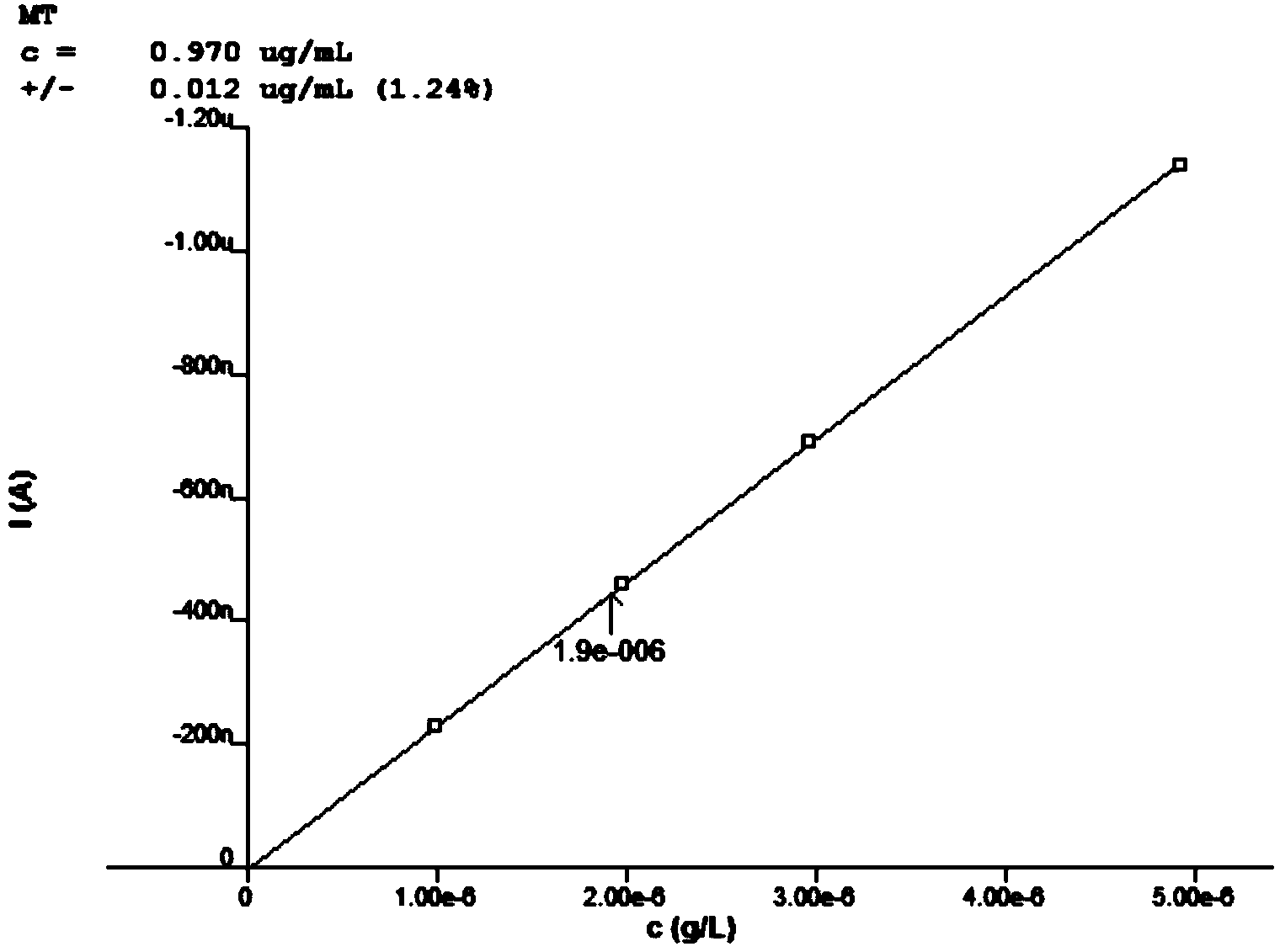Method for detecting metallothioneins in aquatic organism
A technology for metallothionein and aquatic organisms, applied in the direction of material electrochemical variables, etc., can solve the problems of inaccurate quantitative reflection of metallothionein, high detection limit, poor specificity, etc., to optimize the adsorption potential and detection temperature, reduce Interfering substance interference, strong adsorption effect
- Summary
- Abstract
- Description
- Claims
- Application Information
AI Technical Summary
Problems solved by technology
Method used
Image
Examples
Embodiment Construction
[0019] The present invention will be described in detail below in conjunction with the accompanying drawings and embodiments.
[0020] The invention provides a kind of detection method of aquatic organism metallothionein, taking Daphnia magna as an example, the technical scheme adopted is: take Pt(NH 3 ) 2 Cl 2 As supporting electrolyte, NH 4 Cl+NH 4 OH solution was used as a buffer system, and square wave cathodic stripping voltammetry (SWCVS) was used to detect metallothionein in Daphnia magna. The specific steps are as follows:
[0021] The first step, the drawing of the standard curve I-C (current-concentration):
[0022] A Metrohm 797VA polarograph was used as a three-electrode test system, the mercury electrode was used as the working electrode, the Ag / AgCl electrode was used as the reference electrode, and the glassy carbon electrode was used as the counter electrode. Add 10ml of 1M NH to the electrolytic cell 4 Cl+NH 4 OH (pH=10.0) solution was used as the buffe...
PUM
 Login to View More
Login to View More Abstract
Description
Claims
Application Information
 Login to View More
Login to View More - R&D
- Intellectual Property
- Life Sciences
- Materials
- Tech Scout
- Unparalleled Data Quality
- Higher Quality Content
- 60% Fewer Hallucinations
Browse by: Latest US Patents, China's latest patents, Technical Efficacy Thesaurus, Application Domain, Technology Topic, Popular Technical Reports.
© 2025 PatSnap. All rights reserved.Legal|Privacy policy|Modern Slavery Act Transparency Statement|Sitemap|About US| Contact US: help@patsnap.com



